|
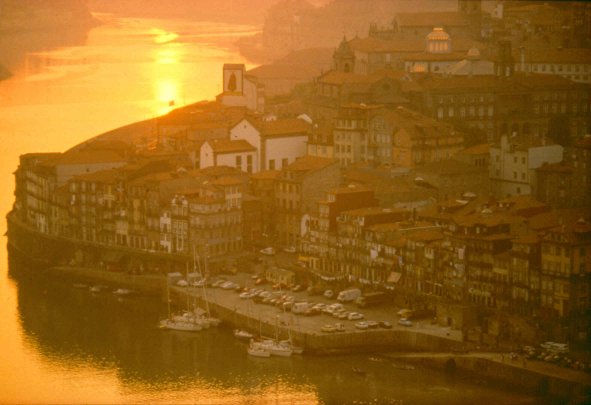 Porto, located on the banks of the river Douro,
is one of the oldest cities in Europe. With a population of about
300.000, it is the country's second most important city in terms of
economic output and cultural influence. Sloping steeply down towards
the river with its remarkable bridges, it has been an inspiration to
a variety of artists. Porto made its name over two ce Porto, located on the banks of the river Douro,
is one of the oldest cities in Europe. With a population of about
300.000, it is the country's second most important city in terms of
economic output and cultural influence. Sloping steeply down towards
the river with its remarkable bridges, it has been an inspiration to
a variety of artists. Porto made its name over two ce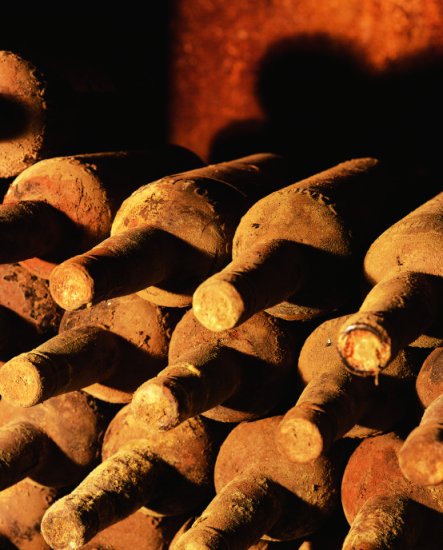 nturies ago
because of its connection with the Porto wine industry and has been
visited over the years by many eminent people - making it one of the
oldest tourism destinations in Europe. nturies ago
because of its connection with the Porto wine industry and has been
visited over the years by many eminent people - making it one of the
oldest tourism destinations in Europe.
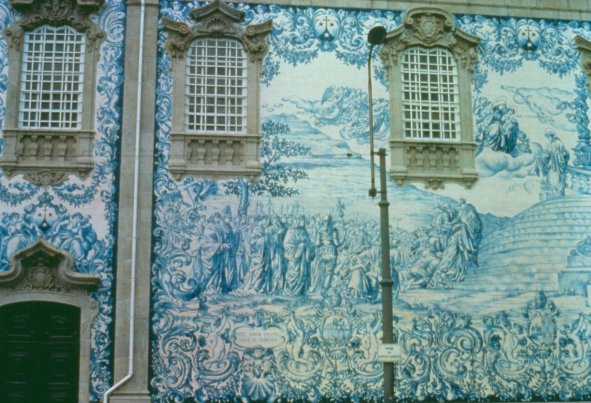 UNESCO has recently designated Porto as a World
Heritage City, a fitting recognition not only for its granite
sculpted beauty, but also for the unforgettable panorama of its
historic centre with narrow streets and typical houses arrayed like
a cascade right down to the river, and for its passionate history
which determined the country's destiny. UNESCO has recently designated Porto as a World
Heritage City, a fitting recognition not only for its granite
sculpted beauty, but also for the unforgettable panorama of its
historic centre with narrow streets and typical houses arrayed like
a cascade right down to the river, and for its passionate history
which determined the country's destiny.
 On the legend of its coat of arms, Porto is
defined as "ancient, most noble, always loyal, invincible
city". The city's symbols are the "Rabelo" boat,
which can still be found docked on the banks of the river, the
baroque Clérigos Tower (built by the Italian architect Nicolau
Nasoni) and the century-old iron bridges, one of them designed by
Gustave Eiffel. Besides these emblematic buildings, Porto has a rich
variety of monumental and artistic heritage. Being one of the oldest
cities on the Iberian Peninsula, its strategic location at the mouth
of the Douro guaranteed a tremendous ease in its dealings with other
regions, and was a determining factor towards its development. On the legend of its coat of arms, Porto is
defined as "ancient, most noble, always loyal, invincible
city". The city's symbols are the "Rabelo" boat,
which can still be found docked on the banks of the river, the
baroque Clérigos Tower (built by the Italian architect Nicolau
Nasoni) and the century-old iron bridges, one of them designed by
Gustave Eiffel. Besides these emblematic buildings, Porto has a rich
variety of monumental and artistic heritage. Being one of the oldest
cities on the Iberian Peninsula, its strategic location at the mouth
of the Douro guaranteed a tremendous ease in its dealings with other
regions, and was a determining factor towards its development.
 The Porto natives are proud of their history, of
having actively taken part in fighting for the independence of the
"Portucalense" County, which, just like the name of
Portugal, originated from the fusion of the toponym
"Portus" (Porto) and "Cale". These were Roman
designations with reference to an anchorage located on the riverbank
and a settlement on the site where the Sé Cathedral now stands. The Porto natives are proud of their history, of
having actively taken part in fighting for the independence of the
"Portucalense" County, which, just like the name of
Portugal, originated from the fusion of the toponym
"Portus" (Porto) and "Cale". These were Roman
designations with reference to an anchorage located on the riverbank
and a settlement on the site where the Sé Cathedral now stands.
Recently elected as "Porto 2001: European
Capital of Culture", the cultural life of Porto is found not
only in its historic buildings that link the past to the future, but
also in institutions such as the São João Theatre, the Serralves
Museum of Contemporary Art, and the Romantic Museum, as well as in
the permanent exhibitions and long running shows they host. Porto is
also at the heart of a knowledge and business intensive region,
offering several universities and research institutes, which
stimulate a strong connection with industry, the service sector and
IT enterprises.
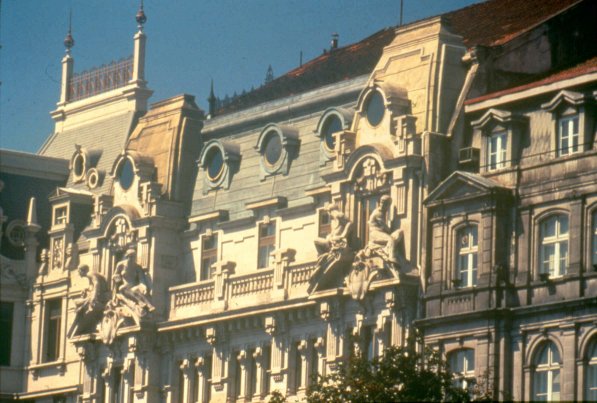 More than a giant museum where a structured
inheritance is concentrated, Porto offers the discovery of a
magnificent repository of scenic, urban, architectural and artistic
values where references to a city with memory persist. More than a giant museum where a structured
inheritance is concentrated, Porto offers the discovery of a
magnificent repository of scenic, urban, architectural and artistic
values where references to a city with memory persist.
Other links
· History of Porto
· The Port Wine
· Tourism website of the Porto City Council
·
Portugal's official tourism website
Photos and text quotations: ©
Tourism Department of the Porto City Council
|

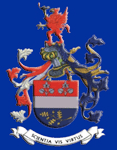

 Porto, located on the banks of the river Douro,
is one of the oldest cities in Europe. With a population of about
300.000, it is the country's second most important city in terms of
economic output and cultural influence. Sloping steeply down towards
the river with its remarkable bridges, it has been an inspiration to
a variety of artists. Porto made its name over two ce
Porto, located on the banks of the river Douro,
is one of the oldest cities in Europe. With a population of about
300.000, it is the country's second most important city in terms of
economic output and cultural influence. Sloping steeply down towards
the river with its remarkable bridges, it has been an inspiration to
a variety of artists. Porto made its name over two ce nturies ago
because of its connection with the Porto wine industry and has been
visited over the years by many eminent people - making it one of the
oldest tourism destinations in Europe.
nturies ago
because of its connection with the Porto wine industry and has been
visited over the years by many eminent people - making it one of the
oldest tourism destinations in Europe. UNESCO has recently designated Porto as a World
Heritage City, a fitting recognition not only for its granite
sculpted beauty, but also for the unforgettable panorama of its
historic centre with narrow streets and typical houses arrayed like
a cascade right down to the river, and for its passionate history
which determined the country's destiny.
UNESCO has recently designated Porto as a World
Heritage City, a fitting recognition not only for its granite
sculpted beauty, but also for the unforgettable panorama of its
historic centre with narrow streets and typical houses arrayed like
a cascade right down to the river, and for its passionate history
which determined the country's destiny. On the legend of its coat of arms, Porto is
defined as "ancient, most noble, always loyal, invincible
city". The city's symbols are the "Rabelo" boat,
which can still be found docked on the banks of the river, the
baroque Clérigos Tower (built by the Italian architect Nicolau
Nasoni) and the century-old iron bridges, one of them designed by
Gustave Eiffel. Besides these emblematic buildings, Porto has a rich
variety of monumental and artistic heritage. Being one of the oldest
cities on the Iberian Peninsula, its strategic location at the mouth
of the Douro guaranteed a tremendous ease in its dealings with other
regions, and was a determining factor towards its development.
On the legend of its coat of arms, Porto is
defined as "ancient, most noble, always loyal, invincible
city". The city's symbols are the "Rabelo" boat,
which can still be found docked on the banks of the river, the
baroque Clérigos Tower (built by the Italian architect Nicolau
Nasoni) and the century-old iron bridges, one of them designed by
Gustave Eiffel. Besides these emblematic buildings, Porto has a rich
variety of monumental and artistic heritage. Being one of the oldest
cities on the Iberian Peninsula, its strategic location at the mouth
of the Douro guaranteed a tremendous ease in its dealings with other
regions, and was a determining factor towards its development. The Porto natives are proud of their history, of
having actively taken part in fighting for the independence of the
"Portucalense" County, which, just like the name of
Portugal, originated from the fusion of the toponym
"Portus" (Porto) and "Cale". These were Roman
designations with reference to an anchorage located on the riverbank
and a settlement on the site where the Sé Cathedral now stands.
The Porto natives are proud of their history, of
having actively taken part in fighting for the independence of the
"Portucalense" County, which, just like the name of
Portugal, originated from the fusion of the toponym
"Portus" (Porto) and "Cale". These were Roman
designations with reference to an anchorage located on the riverbank
and a settlement on the site where the Sé Cathedral now stands. More than a giant museum where a structured
inheritance is concentrated, Porto offers the discovery of a
magnificent repository of scenic, urban, architectural and artistic
values where references to a city with memory persist.
More than a giant museum where a structured
inheritance is concentrated, Porto offers the discovery of a
magnificent repository of scenic, urban, architectural and artistic
values where references to a city with memory persist.